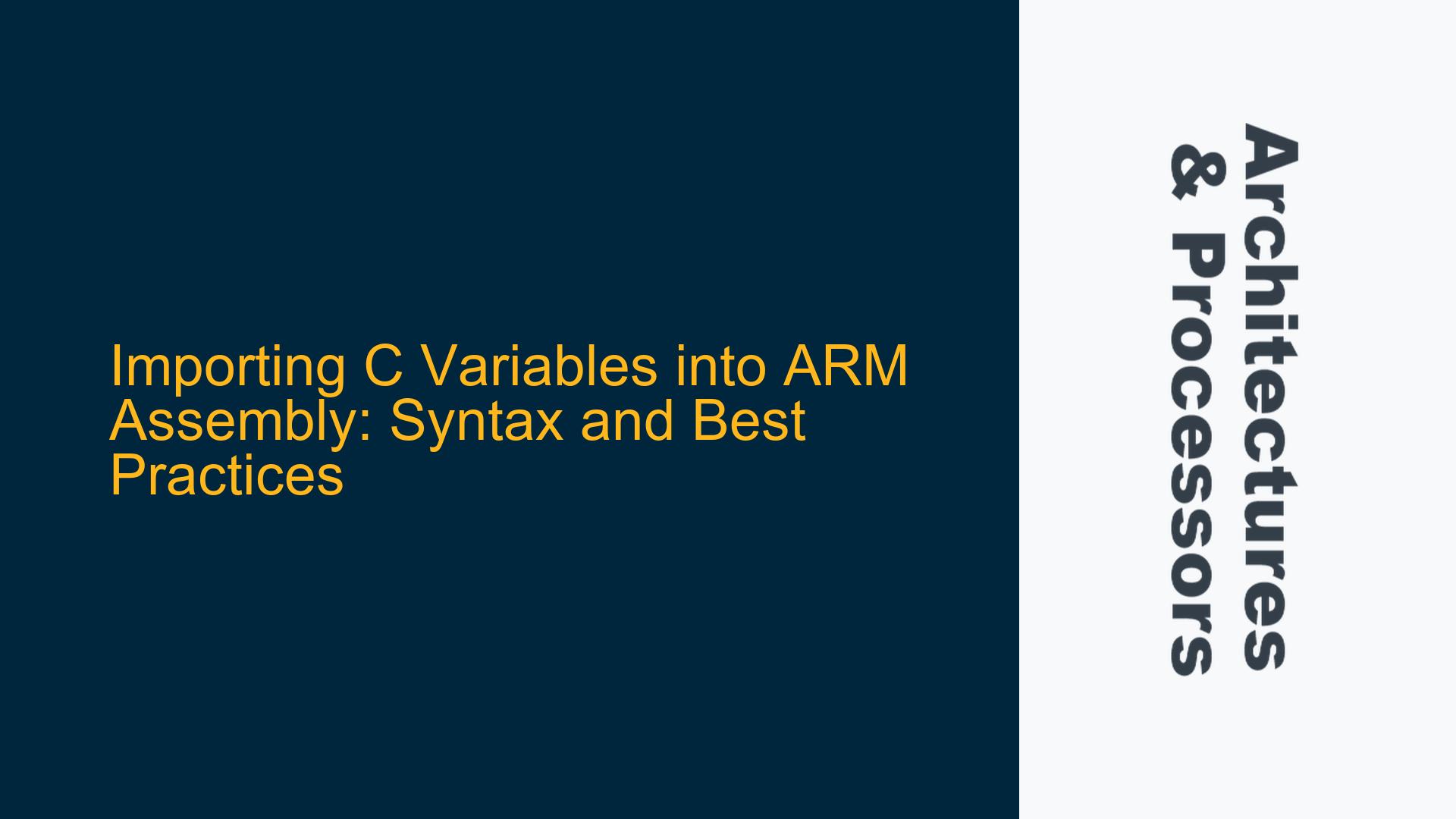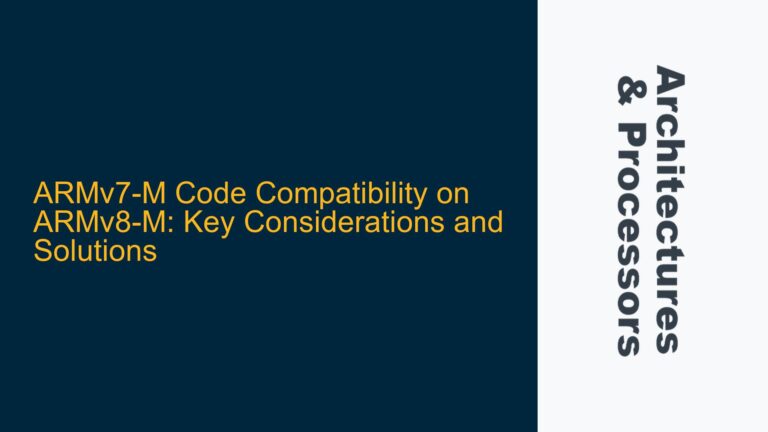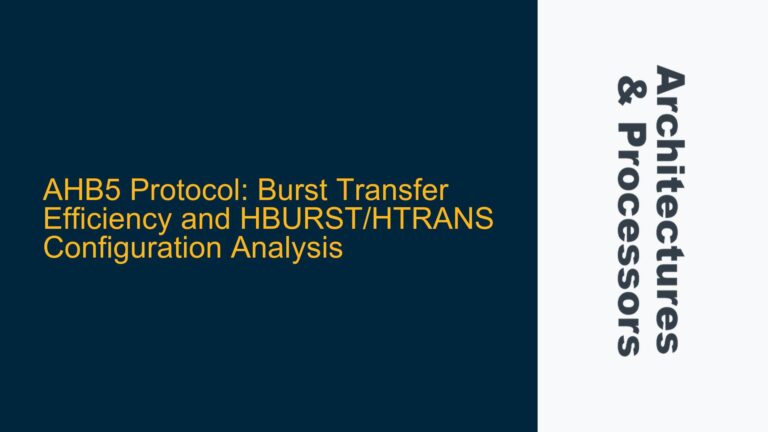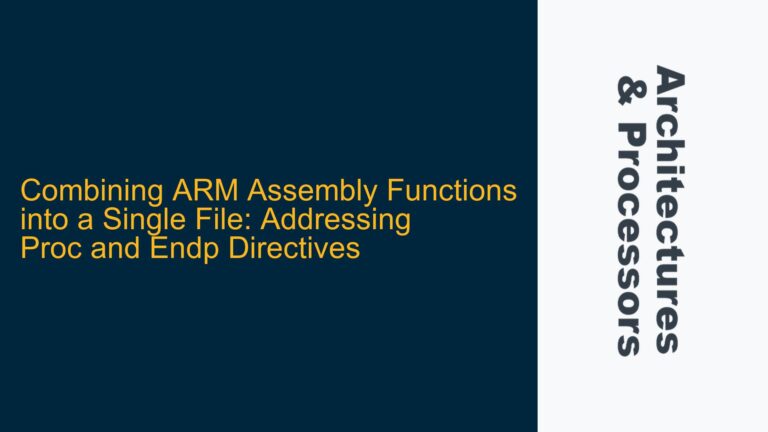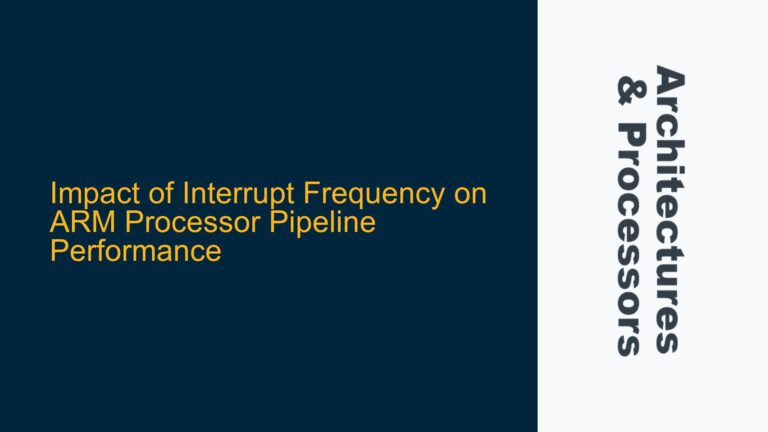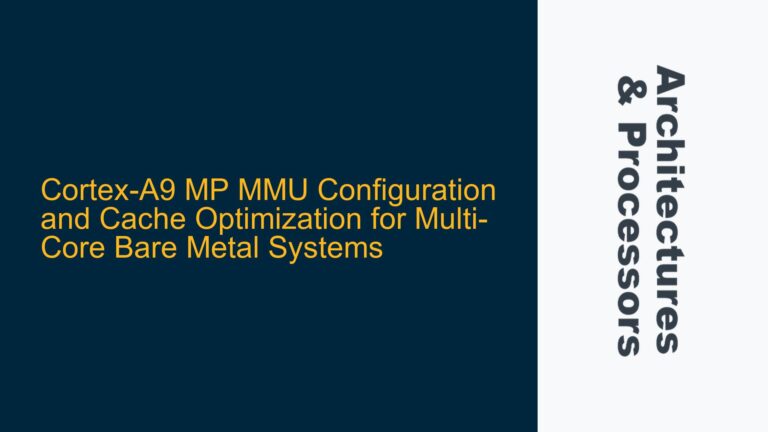ARM Cortex-M0+ C Variable Access in Assembly Code
When working with ARM Cortex-M0+ processors, one common task is accessing C variables from assembly code. This is particularly important in embedded systems where low-level hardware control and performance optimizations are required. The process involves understanding how global variables defined in C can be referenced and manipulated within assembly language routines. The Cortex-M0+ processor, being a low-power, 32-bit RISC processor, has specific constraints and capabilities that must be considered when interfacing C and assembly code.
In the context of the Cortex-M0+, the IMPORT directive is used to bring global C variables into the assembly code. This directive informs the assembler that the symbol is defined externally, typically in a C file. The syntax for importing a C variable into an assembly file is straightforward but requires attention to detail to ensure that the variable is correctly referenced and accessed.
For example, if you have a global variable uint32_t save_mem = INIT_VAR; defined in a C file, you can access this variable in your assembly code using the IMPORT directive. The assembly code would look something like this:
AREA MyData, DATA
IMPORT save_mem
EXPORT MyAssemblyRoutine
MyAssemblyRoutine
LDR R0, =save_mem
LDR R1, [R0]
; Perform operations using R1
BX LR
In this example, the IMPORT directive is used to bring the save_mem variable into the assembly code. The LDR R0, =save_mem instruction loads the address of save_mem into register R0, and the subsequent LDR R1, [R0] instruction loads the value stored at that address into register R1. This allows the assembly code to manipulate the value of save_mem as needed.
Toolchain-Specific Syntax and Directives
The exact syntax for importing and accessing C variables in assembly code can vary depending on the toolchain being used. Different assemblers and compilers may have their own specific directives and syntax rules. For instance, the ARM Compiler (armcc) and GNU Assembler (as) have slightly different ways of handling external symbols.
In the ARM Compiler, the IMPORT directive is used to declare an external symbol, as shown in the previous example. However, in the GNU Assembler, the equivalent directive is .extern. The following example demonstrates how to import a C variable using the GNU Assembler:
.section .data
.extern save_mem
.global MyAssemblyRoutine
MyAssemblyRoutine:
LDR R0, =save_mem
LDR R1, [R0]
; Perform operations using R1
BX LR
In this example, the .extern directive is used to declare that save_mem is an external symbol. The rest of the code is similar to the previous example, with the LDR instructions used to load the address and value of save_mem.
It is crucial to consult the documentation for your specific toolchain to ensure that you are using the correct directives and syntax. Misusing these directives can lead to linker errors or incorrect behavior in your application.
Writing to Specific Memory Addresses Using LDR and STR Instructions
In addition to accessing C variables, you may also need to write to specific memory addresses in your assembly code. This is often required when dealing with memory-mapped peripherals or when implementing low-level memory management routines. The Cortex-M0+ processor provides the LDR and STR instructions for loading and storing data to and from memory.
The LDR instruction is used to load a value from memory into a register, while the STR instruction is used to store a value from a register into memory. These instructions can be used to write integer values to specific memory addresses. For example, if you need to write the value 0x12345678 to a specific memory address, you can use the following assembly code:
LDR R0, =0x20000000 ; Load the memory address into R0
LDR R1, =0x12345678 ; Load the value to be written into R1
STR R1, [R0] ; Store the value in R1 to the address in R0
In this example, the LDR R0, =0x20000000 instruction loads the memory address 0x20000000 into register R0. The LDR R1, =0x12345678 instruction loads the value 0x12345678 into register R1. Finally, the STR R1, [R0] instruction stores the value in R1 to the memory address contained in R0.
It is important to note that the Cortex-M0+ processor uses a 32-bit address space, and the LDR and STR instructions can only access addresses that are aligned to 32-bit boundaries. Attempting to access an unaligned address can result in a fault or undefined behavior.
Common Pitfalls and Best Practices
When working with C variables in assembly code, there are several common pitfalls that you should be aware of. One of the most common issues is failing to properly declare external symbols. If you forget to use the IMPORT or .extern directive, the assembler will not be able to resolve the symbol, leading to linker errors.
Another common issue is incorrect use of the LDR and STR instructions. These instructions require that the memory address be aligned to the size of the data being accessed. For example, when accessing a 32-bit value, the address must be aligned to a 4-byte boundary. Accessing an unaligned address can result in a fault or incorrect behavior.
To avoid these issues, it is important to follow best practices when working with C variables in assembly code. Always use the appropriate directives to declare external symbols, and ensure that memory addresses are properly aligned before using LDR and STR instructions. Additionally, it is a good idea to consult the documentation for your specific toolchain and processor to ensure that you are using the correct syntax and instructions.
Debugging and Verification Techniques
Debugging assembly code that interacts with C variables can be challenging, but there are several techniques that can help. One effective approach is to use a debugger to step through the assembly code and inspect the values of registers and memory locations. This can help you verify that the correct values are being loaded and stored, and that the memory addresses are properly aligned.
Another useful technique is to use logging or printf statements in your C code to print the values of variables before and after they are accessed in assembly code. This can help you identify any discrepancies between the expected and actual values.
Finally, it is important to thoroughly test your assembly code in a variety of scenarios to ensure that it behaves correctly under different conditions. This includes testing with different values, memory addresses, and alignment conditions.
Conclusion
Accessing C variables in assembly code on an ARM Cortex-M0+ processor requires a solid understanding of the processor’s architecture and the specific syntax of your toolchain. By using the IMPORT or .extern directive, you can bring global C variables into your assembly code and manipulate them using the LDR and STR instructions. However, it is important to be aware of common pitfalls, such as incorrect symbol declaration and unaligned memory access, and to follow best practices to avoid these issues.
Debugging and verification techniques, such as using a debugger and logging, can help you ensure that your assembly code is functioning correctly. By following these guidelines and thoroughly testing your code, you can successfully integrate C and assembly code in your embedded systems projects.
